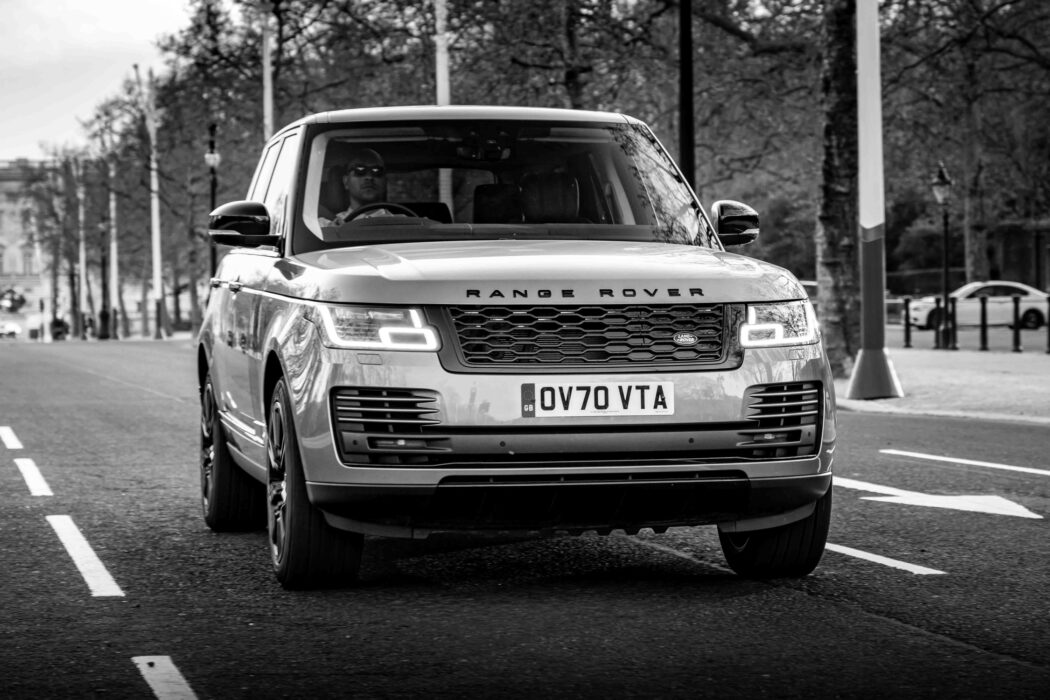Ahh, the SUV: the sports utility vehicle. The Chelsea tractor. The car for all seasons. Or the car that will spend 90% of its time in a city environment, will never call upon one of their quintillion traction and chassis settings, and will probably come adorned with numerous strewn Cheerios and Hula Hoops remnants, and not a few misplaced Peppa Pig figurines. They are, without jest, a necessity in today’s marketplace – if less so on the roads.
The grandfather of the segment is the Land Rover Range Rover. Not the Range Rover Sport, not the Velar, not even the Discovery. The full fat, bonnet at shoulder height, wafting armchair that is the Range Rover. I have in my possession, courtesy of the lovely people at Jaguar Land Rover, a facelifted Range Rover P400e Westminster Black. This the fourth, or perhaps fifth, iteration of the Range Rover. That number really depends on if you are splitting the originals from the later air suspension models of the early nineties. It is curious with the brand, that the older the version that you are driving, the richer you probably are. Drive an original, unmolested Discovery? Billionaire you probably are. So, I should slip by relatively unnoticed in the bright Silicon Silver painted example supplied.
First impressions are difficult. I know what a Range Rover looks like. It looks like a Range Rover. Not like anything else, like a Range Rover. It’s a big car, by anyone’s standards. The default stance is imposing but it is a well resolved design, nonetheless. We have become so accustomed to seeing their form on our roads that we rarely take a second glance or a moment to take them in. So, let’s spend a moment doing just that. The Westminster Black specification brings gloss black trim to the major exterior areas. Window surrounds, the side vents and front valance, grill, intakes and rear diffuser all supplied in the same gloss, bringing a slight menace to the car. The 21-inch wheels are similarly coloured, which could serve to only highlight any parking deficiencies one may possess.
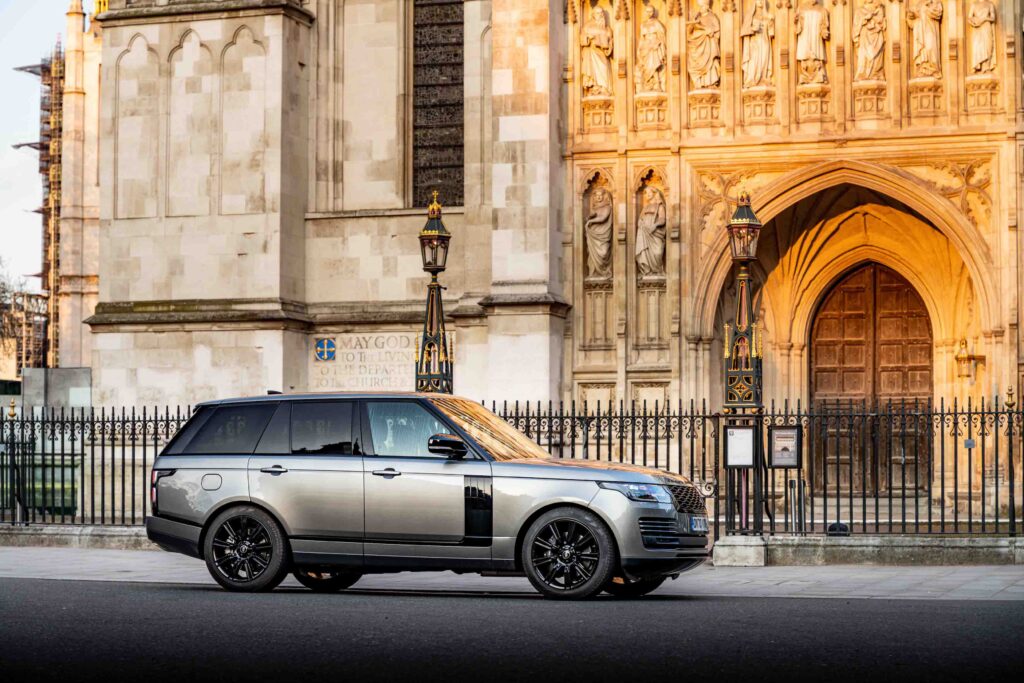
Imagery by Roger Chan
As I said, it’s a big old thing. Proportionally though, it looks spot on. It has a commanding presence, the likes of which we rarely see. Think early-nineties motorcade whistling through Kuwait (armed Landcruisers optional). The updated light clusters and vents of the front of the car have somewhat softened the car’s lines and removed a degree of the boxiness, perhaps necessary in the design language. The slopes and curves provided by the front end and the rear slope through the tailgate both counter the larger straight horizontal lines seen throughout the rest of the car. Did I say that it was big? It’s tall with it, and with that provides the visibility that is the first thing that one notices when climbing aboard. Scratch that; I’ve just climbed aboard. That’s what you notice first. I don’t moonlight for an NBA franchise, although admittedly I also wasn’t an extra in Willow – but I did have to give a little hop up into the cabin. If anything, it sort of adds to the presence that the car brings.
One option that the Westminster specification brings is the panoramic sunroof – a must have. It adds real airiness to the cabin and a slight tonic to the insistence of applying privacy glass to every vehicle that runs off every production line. It’s like a skill that’s just been discovered. Or the general population are far more risqué in their backseat behaviours than our stiff upper lip would have you imagine. But yes, big, spacious and eminently comfortable.
Let’s, therefore, break the Range Rover P400e Westminster Black down. It’s the range topping model for Land Rover, and has been recently facelifted, including lights, grill, vents and internally the infotainment and climate functions have been renewed. It is a P for petrol. 400 for HP (actually 404, but whatever, I guess. I suppose 404 is less snappy). E for electric, and Westminster Black for trim level and seemingly, colour. I doubt it was pre-emptive knowing it was I who would be testing it. That’s a fair amount of information given in a name, but it represents a huge sea change for what a traditional view of the Range Rover would be. Drivetrain wise the car is powered by a two litre four-cylinder engine that has been seen previously in the Sport more notably. Mated to that is a 13.1kWh lithium-ion battery that provides approximately 25% of that 404HP. The battery is housed within the transmission, that being the now seemingly universal 8 speed ZF box. And whilst this may be less than traditional, it still retains all wheel drive, and a twin speed transfer box; controlling low gear speeds and allowing for a raft of electronic suspension settings that would see it comfortably in some of the harshest conditions.
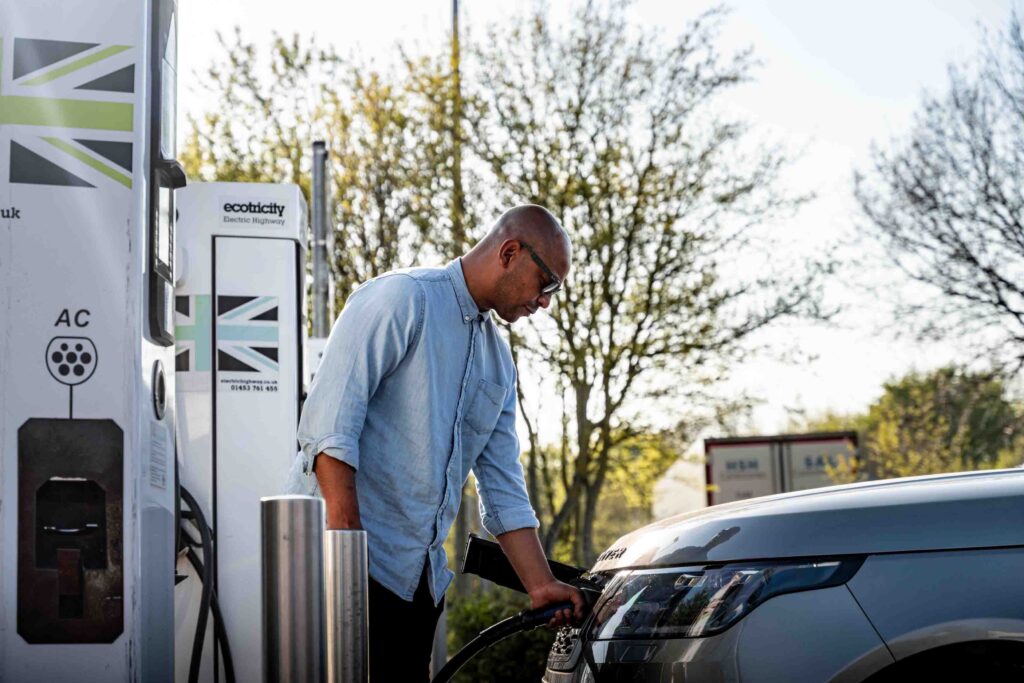
Imagery by Roger Chan
Though it retains all of the attributes of a Range Rover, what would be the best use of this particular model is that I have an office 21 miles away with a charger to match the one I have at home. Overnight, the car is charged, and I waft serenely to the office utilising only the electric power and the goodwill of a thousand pixies. Whilst presiding over my minions, the car charges outside, ready for me to repeat my wafted joy to the comfort of home. Weekends could be either filled with slightly more involving and smaller vehicles, or the accumulated masses could hop on board the Range Rover and a jolly good time could be had by all. However, that’s not my life and, as such, I may be doing the car a disservice by not being that guy.
So that leaves me with two choices – or three, I guess, if one counts a half-way house between the two. First, I could muddle together charging facilities. I could traffic cone the space outside my property, and plot routes and locations to enable peak electric consumption. I could also do none of that, drive it like any other car and see how it performs. Or option three, charge when able and accessible, and utilise that in the most efficient way possible and to that end, get a good mixed view of electric performance, real world performance, and also, ease of infrastructure. Though the last may not technically lie in the hands of those good people at Jaguar Land Rover. I go for option three and charge the car on three occasions. Overnight, at home, twice, and once on a journey at a motorway service station, not through need, but through journalistic integrity (he says tongue in cheek. Or should that be ‘foot in mouth’?)
Where were we? Right. Car charged, time to set off. I opt to not use solely electric for my first outing, but prefer to use the hybrid system to use the electric system to bridge the torque gap from the four-cylinder, and maintain the most efficient, ‘read brisk’, progress possible. I wouldn’t say it’s a car that can exactly be hustled. But progress is surprisingly fleet of foot. For a car that could double as a London pied a terre, it is a surprisingly nimble thing. Tracking lines is relatively easy once one becomes accustomed to the slightly removed feel of inputs. It’s not exactly point and shoot, but nor is it seasick inducingly soft. What is curious is that steering feel, chassis feel, the brake pedal, all feel like you’re not really doing anything. At first it was quite disconcerting. Everything feels numb. However, ten minutes in, one realises all inputs are being attended to, all pedal depressions are calculated.
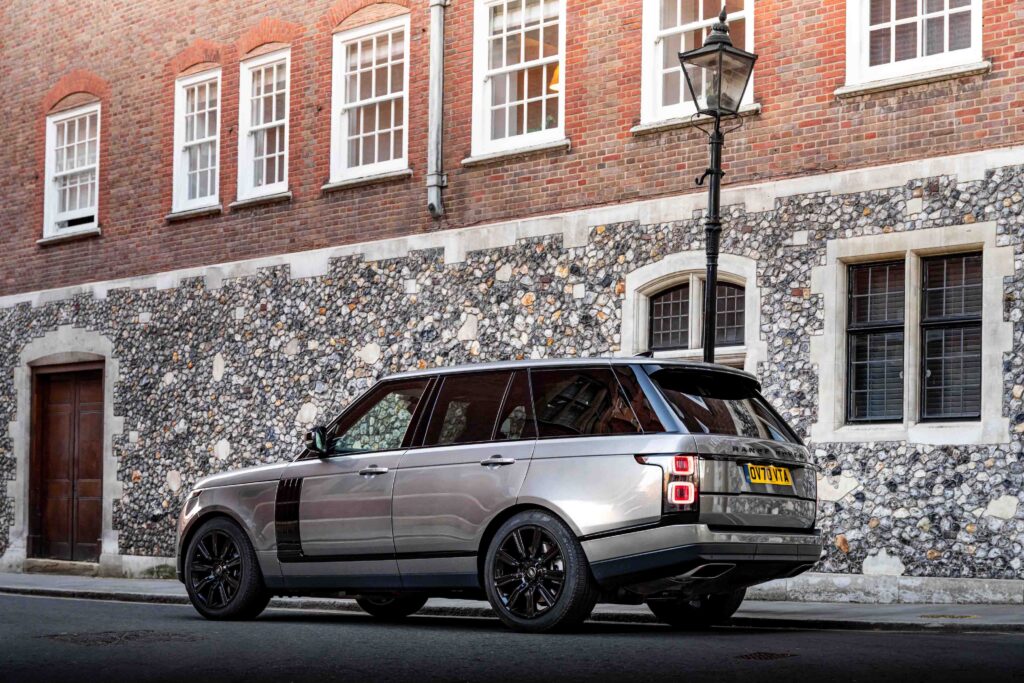
Imagery by Roger Chan
How else did you make that gap? Or how else did you make that three point turn on a tight road? Or how else have you negotiated town, country, dale and glen without so much as a second glance or a bead of perspiration?
As the generations have passed, their ubiquity on our roads has increased. Their ubiquity on all roads, in fact, has increased. There are few more international cars. One reason, aside from status, is that they’re genuinely an easy proposition to live with. I’m not simply talking switchgear and infotainment, which, with the new dual touchscreen, is a breeze. But inputs into the car, and how manageable it is on the road is the real beauty of the package. The drivetrain isn’t a barnstormer, but as mentioned earlier, that’s a) not the point, and b) there are plenty of other drivetrains available should that be your schtick.
What it does do is get you from start to destination with minimal fuss. Even with the battery near depleted, progress is nowhere near as strangled as I expected it to be. It’s not fast, and you’re not going to be surprising anyone from the lights. But the more time spent driving one, you quickly realise that is categorically not the point. Buy a Range Rover Sport SVR if you’re that guy. That the Sport exists, as with the Velar and Evoque, signifies what the Range Rover has become. It’s a Range Topper: a car where you can pick more sensible options from the range, but only this one will do.
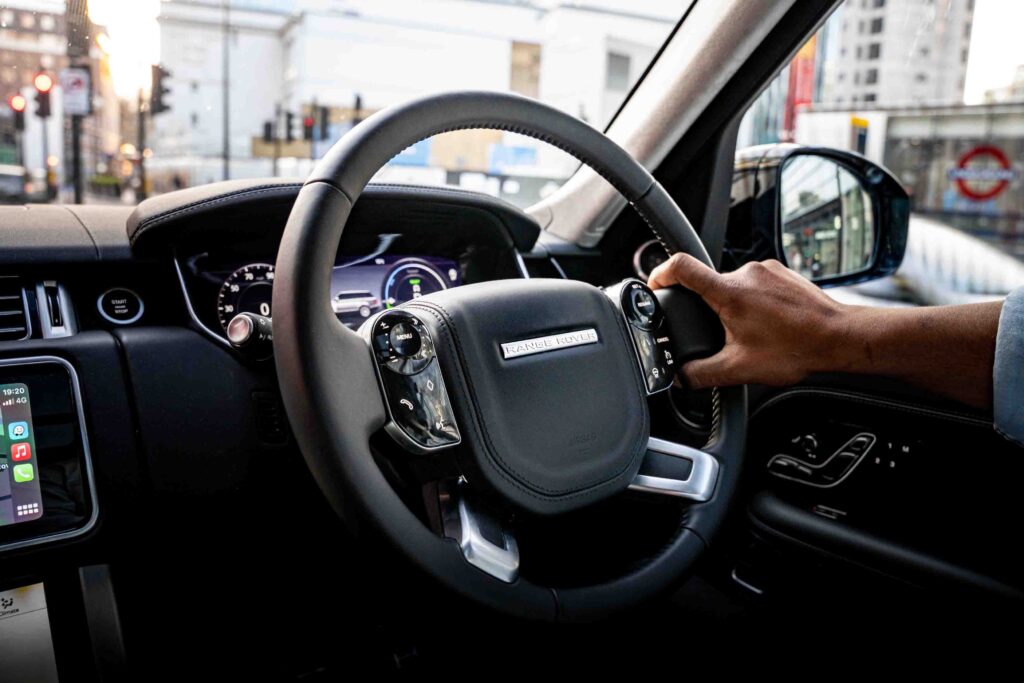
Imagery by Roger Chan
What I discovered about the Range Rover that I had not perhaps previously considered is that it’s in a class of its own. There isn’t anything comparable. There are imitators, but not comparable. What I mean is: manufacturers have run to the SUV shape for the best part of two decades. Customers want a higher vantage point, a higher-level of safety. What we therefore have received is a list of large jacked-up cars, designed to drive like large non-jacked-up cars. And therein lies the rub. ‘Like cars’. That’s no bad thing, but what the Range Rover is – unmistakably, unashamedly – is a Range Rover. It doesn’t necessarily drive like a car, because it isn’t one. It’s a Range Rover. I’m not decrying the current contenders. I have driven many of the current crop of SUVs and super SUVs and some are magnificent pieces of engineering. But they wouldn’t even exist were it not for the Range Rover, and that for me, makes it a class of one.
Dynamically, the magic comes in what it is able to do, but is perhaps now less used a function, in its off-road prowess. Nothing will get you places that a Range Rover will. Nothing will cross beaten tundra with such careless abandon whilst simultaneously massaging your posterior and showing passengers reruns of Friends. Option the rear tailgate event seating and you’ll get a bloody comfortable view when you get there. What was relatively utilitarian in the past is now firmly embedded in luxury again.
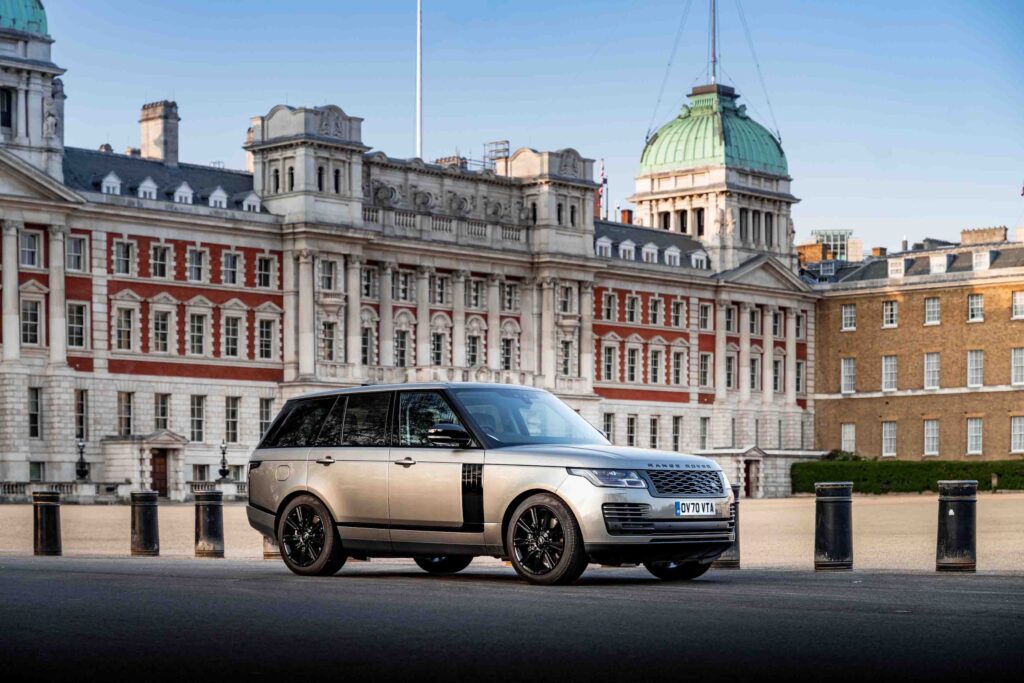
Imagery by Roger Chan
Another benefit from diversifying the model lineup is that Land Rover can be unapologetic in their framing of the Range Rover. On the road, it’s as comfortable as any other luxury car, SUV or not. One finds themselves following on from positioning the seat into adopting an ‘armchair’ state of mind for everything, not simply the seat. The seats themselves, the interior as a whole has been engineered to be effortless across the entire breadth of the spectrum. Dogs, shopping, kids, wardrobes, green lanes, motorways, ram raiding the local Boots on a comedown… It does it all. That I could cut such a distinguished jib rolling through wonderful London in the golden hour says much of what the Range Rover exemplifies. Someone once said ‘a lady in the street and a freak in the bed’. This is more ‘refined gentleman on the street, refined gentleman in Cap d’Antibes, Zermatt or the Hamptons’. Hell, you’d look like a refined gentleman in Scunthorpe in one of these. Tune in next quarter for more tenuous comparisons.
Electric power can be safeguarded and used at later points in your journey, perhaps should you be driving into a low emission zone and you want to put your smugness on hold until later? Or it can be used from start, should you want the only sound on your morning departure being gravel noise and not engine note. The idea is that through regenerative braking, the 13.1kwh battery will retain enough charge for one to maintain the whole 400bhp available through the mixed drivetrain. 113 of the horses coming through the electric system and the 85kW motor. It isn’t a system as intrusive as some, but then again, it doesn’t supply a huge amount in regenerative gains. Personally, I rather like the compromise. I’ve never much been a fan of being thrown forward as soon as I let off my accelerator. It tends to make me spill my drink. Charging times range from between two and seven hours. Both are happily within a night’s sleep, so really, it’s of little difference, given that with the petrol engine side by side, range anxiety isn’t a thing.
So, overall, where does that leave this particular Range Rover in the pantheon of modern-day SUVs? Well, pretty much where Land Rover says it does. The reason being, as I’ve said, the Range Rover is its own segment, and this model provides yet another option for buyers to find the appropriate Range Rover for themselves. Not the appropriate SUV, the appropriate Range Rover. Because let’s be honest, there are times when only the best will do.

